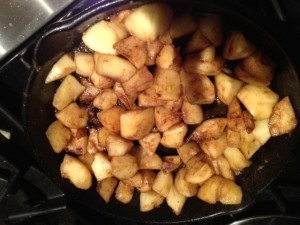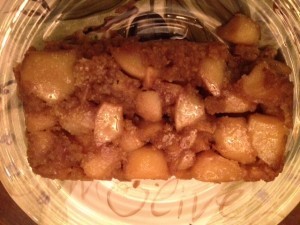A (Somewhat Disappointing) Experiment Involving an 18th Century Recipe
For my sheepish and belated debut on the Firebird blog, I thought it would be fun to try a recipe related to my Golden Heart finaling manuscript, Scandal in Spades. Unfortunately, I checked the manuscript and the only food mentioned in the book was roasted goose:
(My heroine, Clarissa, is watching Septimus, who she knows to be insincere, charm some young ladies by expressing a feigned distaste for the hero’s fowl hunting)
“I agree, Miss Graden,” Septimus said. “Hunting is a barbarous sport. Falling innocent birds from the sky.” He shook his head. “I prefer to fish the sea.”
“Are birds more innocent than fish?” Clarissa asked.
“Well, large fish eat small ones,” Verity supplied.
“Oh yes,” Patience added, her adoring gaze fixed on Septimus. “To fish is certainly better than to hunt.”
“Tell us, Lady Clarissa,” Septimus asked, “what do you prefer?”
Clarissa smiled. “Roasted goose.”
I should explain that I am *not* (for good reason) the primary cook of my household. Attempting a meat recipe from an 18th century cookbook might well be the end of me, my kitchen or both. However, when holidays roll around, I am in charge of desserts. My heroine grew up on an estate in the South of England known for its apple orchards. Surely I could manage an eighteenth century apple dessert!
I chose A Pupton of Apples from the intriguingly named The Art of Cookery Made Plain and Easy which far exceeds any Thing of the Kind Yet Published by Hannah Glasse published in the year 1747. What’s a pupton, you ask? Well, in The Huffington Post’s food encyclopedia, Gilly Lehmann, an authority on the history of English cookery books, defines the term as “a dish of small meat items (usually pigeon) with a garnish, encased in a crust of forcemeat bound with egg, and baked. The name came from the French poupeton, and was transmogrified in English into ‘pupton’, or ‘pulpatoon’.” He goes on to say “these dishes were falling from favour by the middle of the 18th century” because “they all suffered from the opprobrium heaped upon fancy French imports.” Although A Pupton of Apples contains no meat, I believe Ms. Glasse calls this dish a “Pupton” because the apple slices are bound with egg and baked, or, perhaps she was trying to give her apple dish a bit of French flair.
Here’s the recipe & notes on my attempt:
 Step one: Pare some apples, take out the cores and put them in a skillet.
Step one: Pare some apples, take out the cores and put them in a skillet.
Some, I decided, meant five. And, I figured she probably meant that I should put the sliced apple in the skillet, not the cores.
Step Two: To a quart mugful heaped, put in a quarter of a pound of sugar, and two spoonfuls of water. Do them over a slow fire, keep them stirring; add a little cinnamon.
I chose Medium heat as ‘slow fire’ and followed the directions.
Step Three: When it is quite thick and like marmalade, let it stand until cool.
About a half hour of stirring later, my apples looked nothing like marmalade–probably because I chose the wrong type of apple. But, onward…
Step Four: Beat in the yolks of four or five eggs and stir in a handful of grated bread and a quarter pound of fresh butter then form it into what shape you please. Bake it in slow oven. 
As it happened, it pleased me to place my mush in a rectangular bread baking dish. “Slow oven” I decided meant 325 for a half hour.
Final Step: Turn it upsidedown on a plate for a second course.
I wish I could say A Pupton of Apples was a smashing success, but my first foray in ‘eighteenth century’ cooking was, essentially, eggy apple crisp.
Are there recipes in your favorite books that you have tried/would like to try (either books that you’ve written or ones that you have read)?



